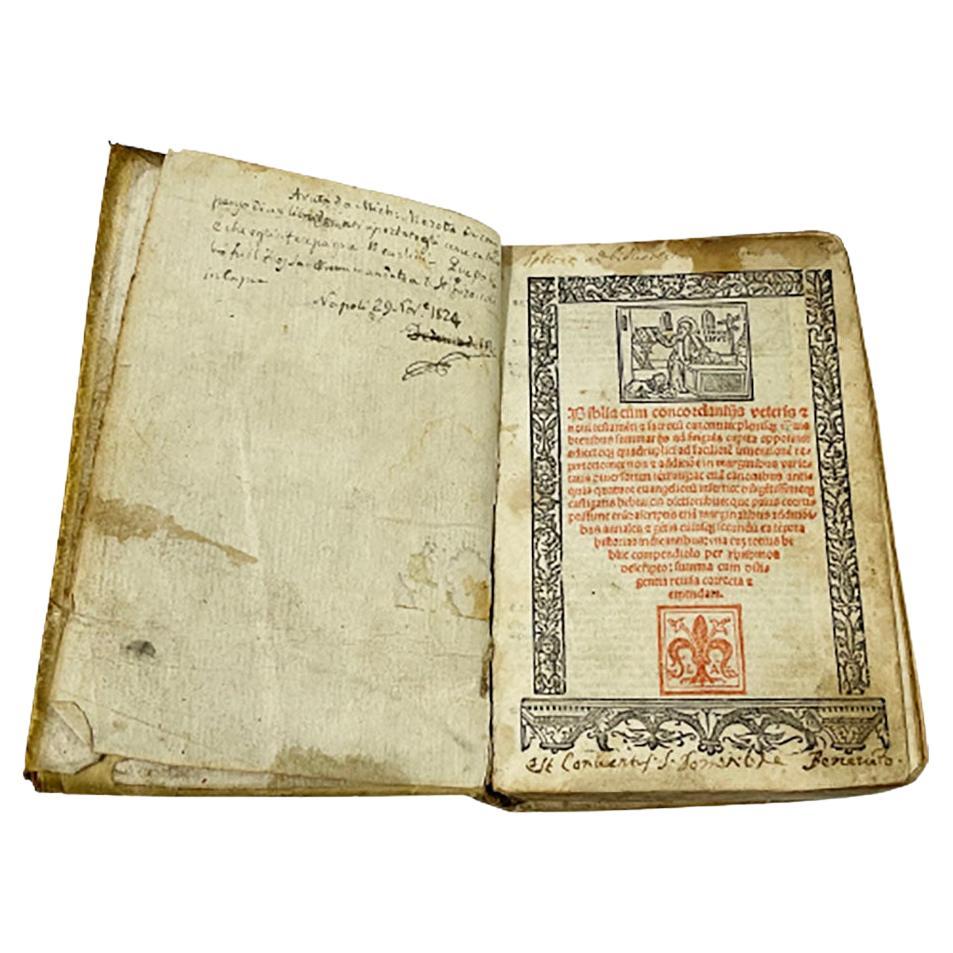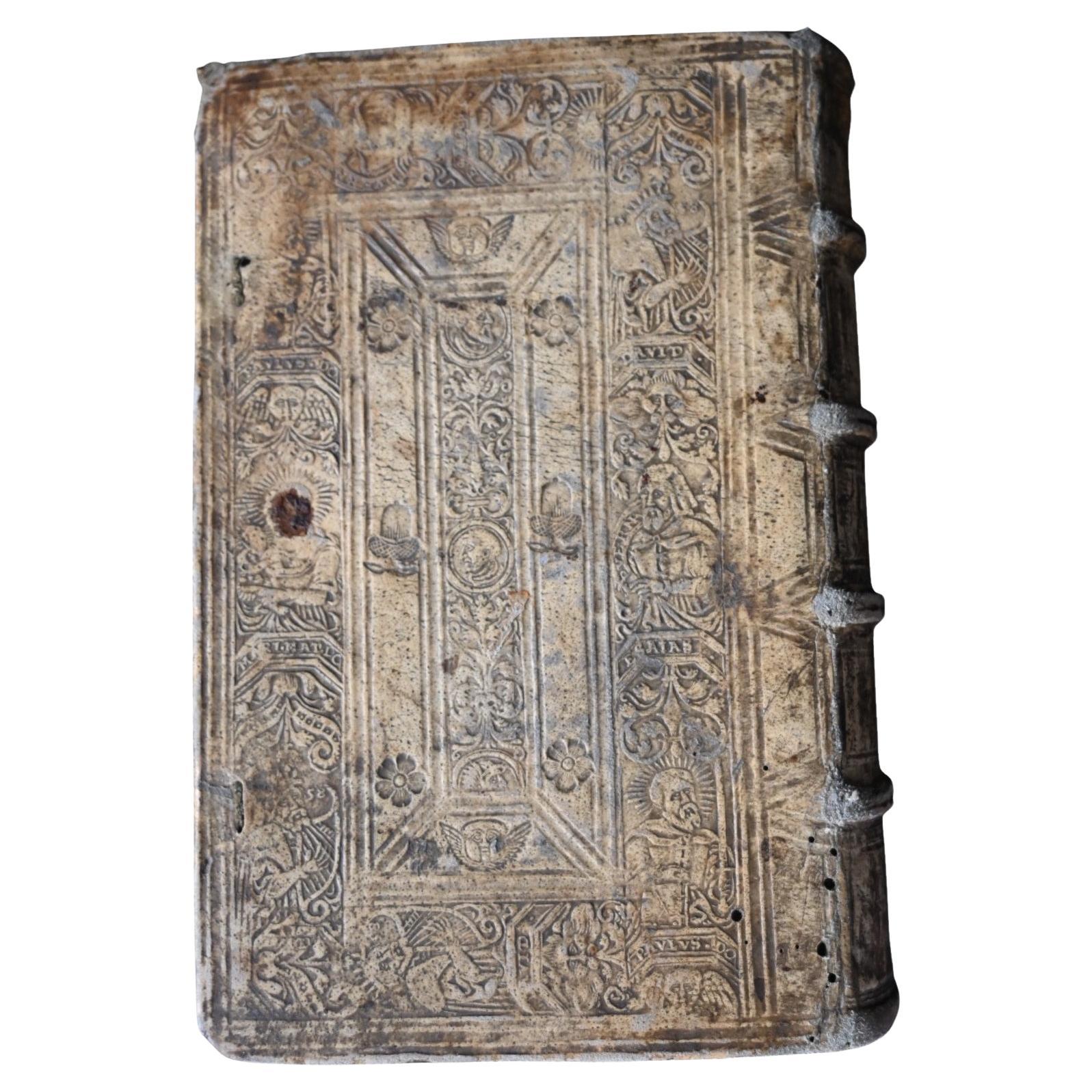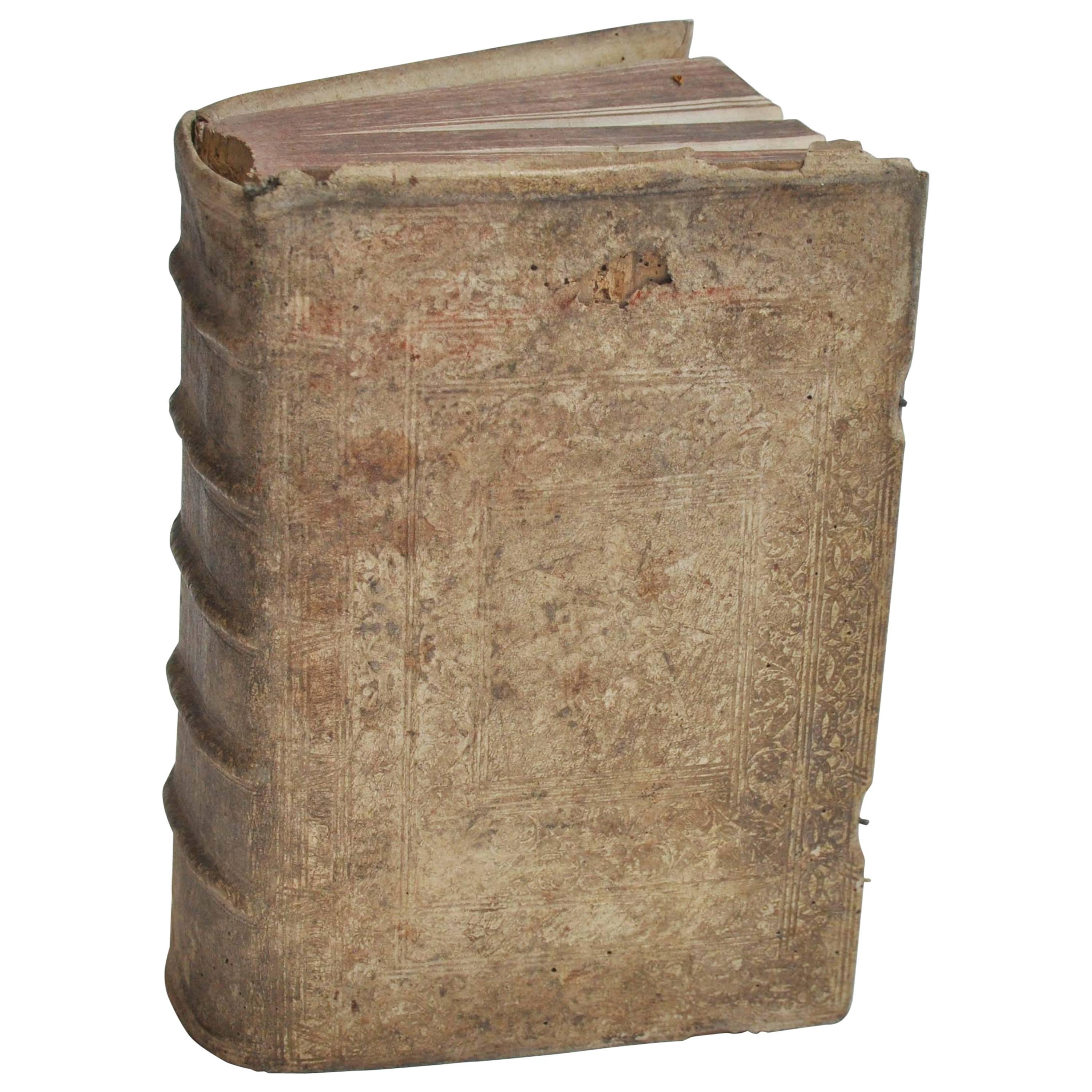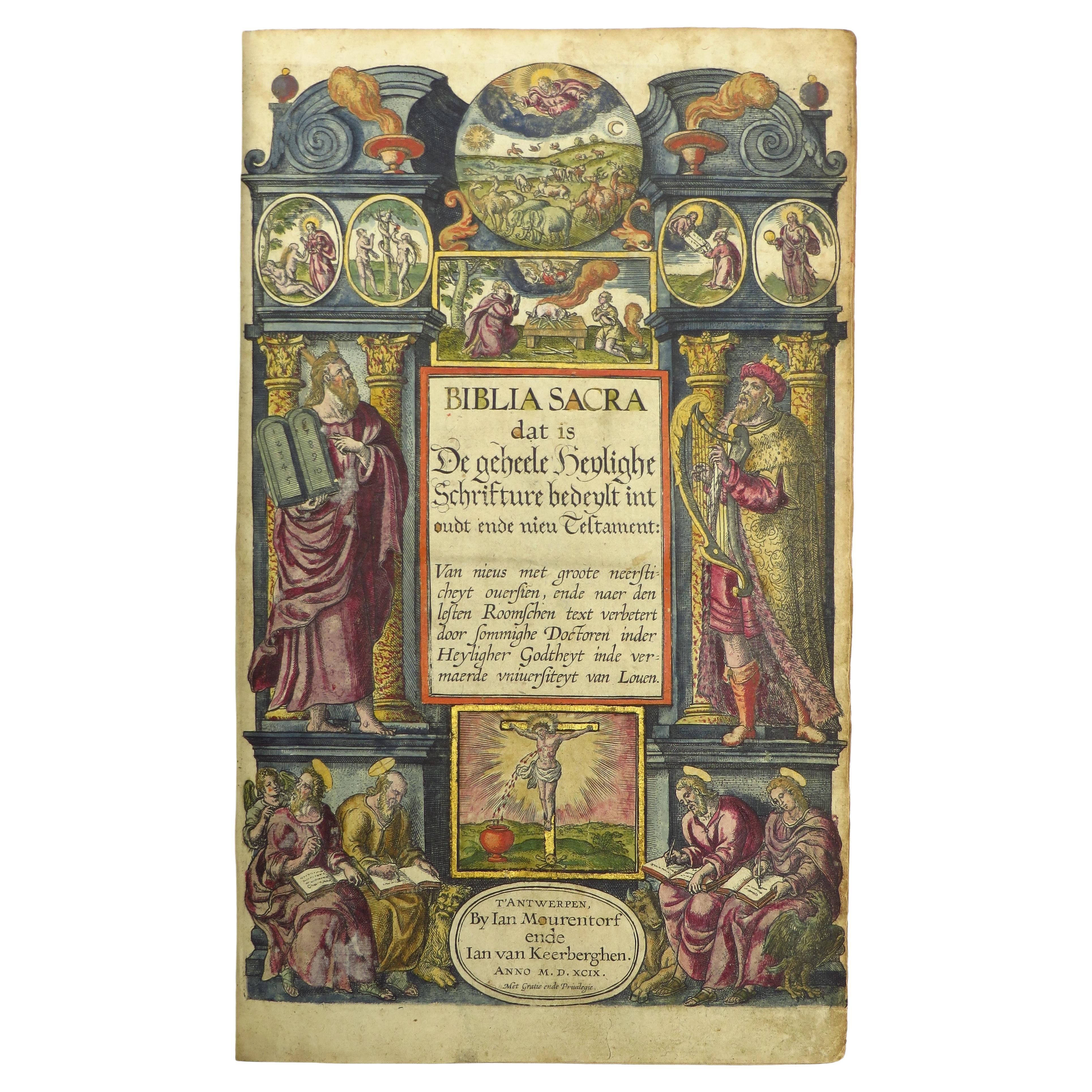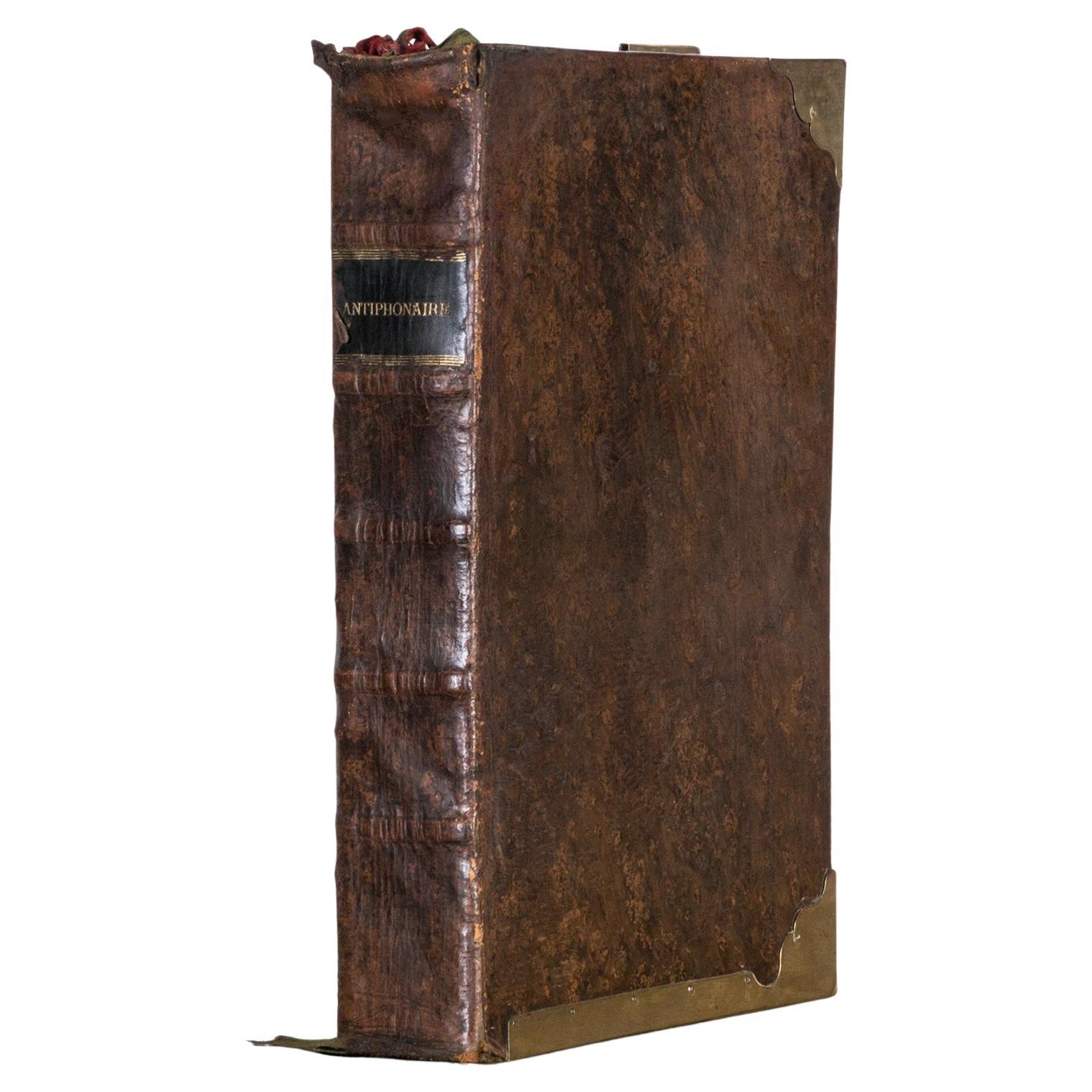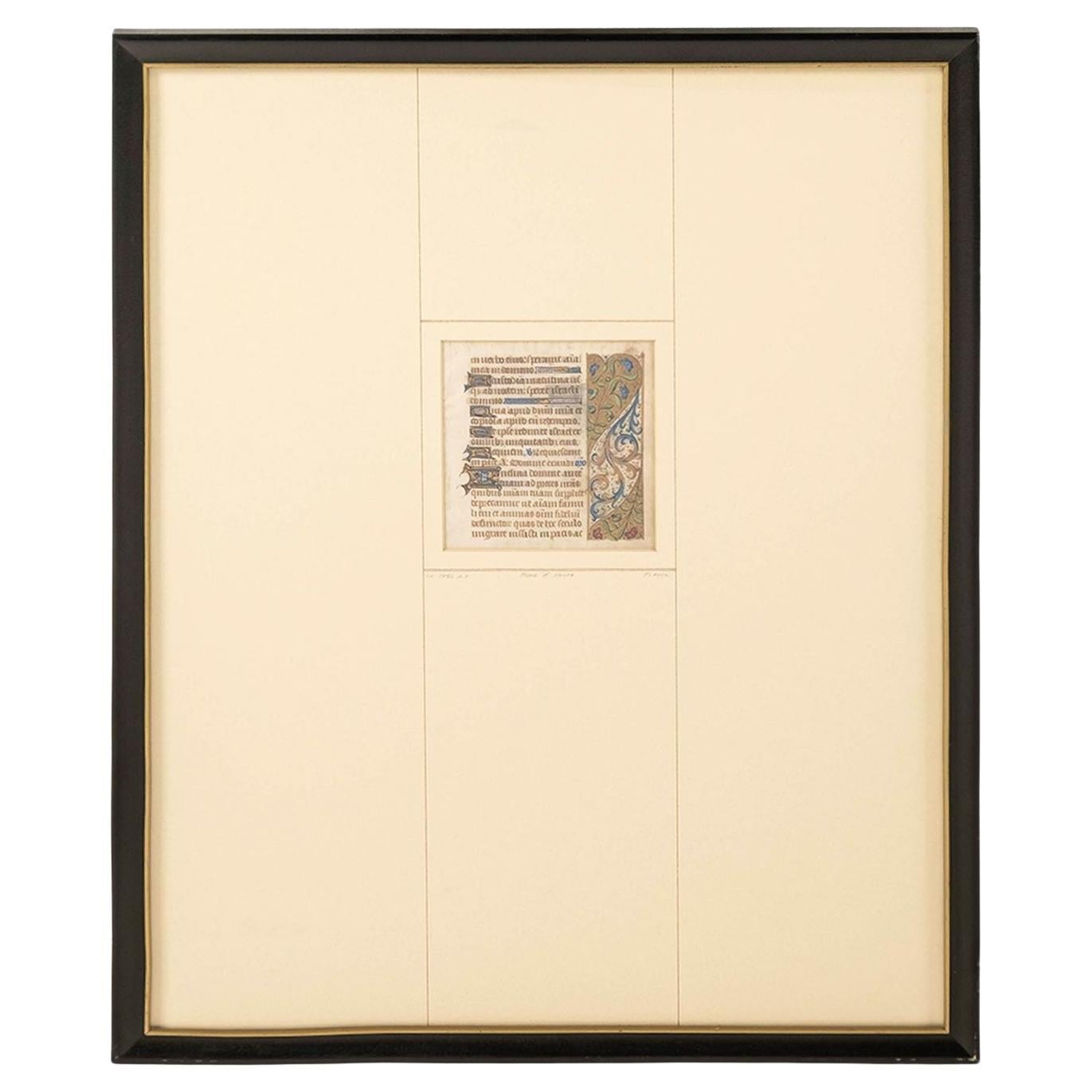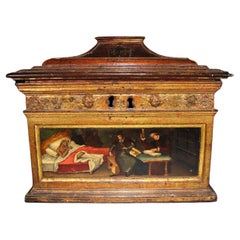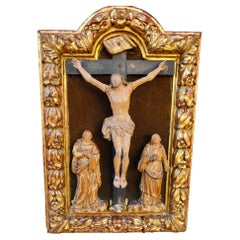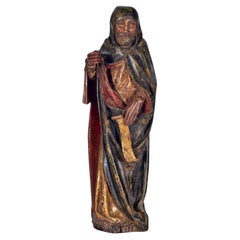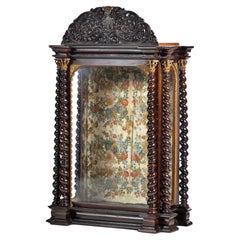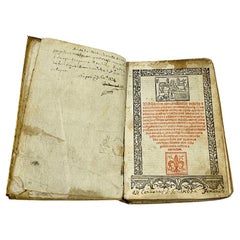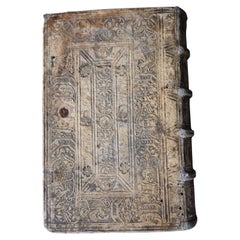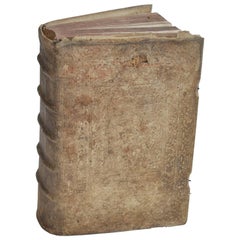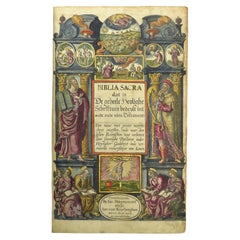Items Similar to IMPORTANT AND RARE LITURGICAL PSALTER, Spain, 16th Century (1550-1575)
Want more images or videos?
Request additional images or videos from the seller
1 of 10
IMPORTANT AND RARE LITURGICAL PSALTER, Spain, 16th Century (1550-1575)
$29,536.31
£22,139.30
€25,000
CA$40,577.88
A$45,301.38
CHF 23,737.24
MX$554,533.38
NOK 301,463.22
SEK 284,241.54
DKK 190,309.12
Shipping
Retrieving quote...The 1stDibs Promise:
Authenticity Guarantee,
Money-Back Guarantee,
24-Hour Cancellation
About the Item
IMPORTANT AND RARE LITURGICAL PSALTER, Spain, 16th Century (1550-1750)
Psalterium iuxta Romanum (Liturgical Psalter according to the Roman Rite)
Latin (with Spanish additions), illuminated manuscript on parchment, Spain, circa 1550-1575
123 ff., Roman liturgical script, various writing modules, brown and red ink (rubrics in red), lead pencil rule, tabs marking the main textual divisions of the psalter, framed initials in black ink, initials painted in red or blue on yellow watercolor backgrounds, sometimes with watercolored plant decoration, large initials (we count 67) 3 to 5 lines high introducing the major liturgical divisions, puzzle initials in blue and red ink with watercolored plant or floral motifs (flowers, trees), and various motifs such as a figure contemplating a flower.
Contemporary monastic binding of the manuscript, Havana basana on wooden boards, decorated on the boards with geometric motifs composed of cold fillets, a central navel and brass spandrels, brass clasps, and a spine with four ribs and decorated with cold fillets. The lower spine cover is damaged; the boards are worn and the leather is cracked in places; the parchment inside is stained in places; the first leaf is reinforced with a strip of paper; some initials are rubbed off.
Sheet size: 580 x 380 mm; binding size: 610 x 410 mm.
The style and layout of this manuscript suggest that it originated in northern Spain. In any case, the presence at the end of the volume of a table of psalms, arranged alphabetically and preceded by the inscription: "Index of the psalms contained in this psalterium, arranged according to the alphabet," establishes a link with the Iberian world.
This manuscript presents the text of the psalms with insertions of liturgical passages from the Proper of the Office (Ordinary of the Office) according to the liturgical seasons (Advent, Christmas, Septuagesima, Lent, Passion, and Easter), indicated by rubrics.
- Creator:Europa (Author)
- Dimensions:Height: 24.02 in (61 cm)Width: 16.15 in (41 cm)Depth: 4.73 in (12 cm)
- Style:Spanish Colonial (Of the Period)
- Materials and Techniques:
- Place of Origin:
- Period:
- Date of Manufacture:1550-1575
- Condition:Wear consistent with age and use. Original condition.
- Seller Location:Madrid, ES
- Reference Number:1stDibs: LU5779244291992
About the Seller
4.8
Platinum Seller
Premium sellers with a 4.7+ rating and 24-hour response times
Established in 2005
1stDibs seller since 2021
364 sales on 1stDibs
Typical response time: 1 hour
- ShippingRetrieving quote...Shipping from: Madrid, Spain
- Return Policy
Authenticity Guarantee
In the unlikely event there’s an issue with an item’s authenticity, contact us within 1 year for a full refund. DetailsMoney-Back Guarantee
If your item is not as described, is damaged in transit, or does not arrive, contact us within 7 days for a full refund. Details24-Hour Cancellation
You have a 24-hour grace period in which to reconsider your purchase, with no questions asked.Vetted Professional Sellers
Our world-class sellers must adhere to strict standards for service and quality, maintaining the integrity of our listings.Price-Match Guarantee
If you find that a seller listed the same item for a lower price elsewhere, we’ll match it.Trusted Global Delivery
Our best-in-class carrier network provides specialized shipping options worldwide, including custom delivery.More From This Seller
View AllImportant Renaissance Medical Box Spanish or Italian Workshop, Around 1550
Located in Madrid, ES
Important Renaissance Medical Box. Spanish Or Italian Workshop, Around 1550
Renaissance Medical Casket with stepped lid and vaulted flanked dome. Polychro...
Category
Antique 16th Century Spanish Baroque Decorative Boxes
Materials
Wood
Calvary XVIIth Century, Religious
Located in Madrid, ES
Calvary XVIIth century, religious
17th Century Calvary, religious Ancient Calvary from the 17th century carved in boxwood Boxwood is characterized by its hardness and difficult pruning. It has traces of polychromy and gold. Measure: 65x45...
Category
Antique 1670s European Classical Roman Religious Items
Materials
Fruitwood
San Antonio Abad, Spanish School of the 15th Century '1440-1501'
Located in Madrid, ES
San Antonio Abad, Castilian school of the 15th century (1440-1501)
Carving in polychrome wood, measures: 45 x 15 cm
good vintage conditions.
Category
Antique 15th Century and Earlier Spanish Gothic Figurative Sculptures
Materials
Wood
IMPORTANT LARGE PORTUGUESE ORATORY 17th Century
Located in Madrid, ES
IMPORTANT LARGE PORTUGUESE ORATORY 17th Century
in carved and turned Brazilian rosewood with remains of gilding, glass doors and sides.
Interior with painted, polychrome and gold de...
Category
Antique 17th Century Portuguese Renaissance Cabinets
Materials
Wood
Important German Tabernacle Museum Piece 16th-17th Century
Located in Madrid, ES
Important German Tabernacle Museum Piece 16th-17th century
IMPORTANT GERMAN TABERNACLE IN MUSEUM 16TH-17TH CENTURY EXCEPTIONAL SOUTHERN GERMAN TABERNACLE...
Category
Antique 16th Century Religious Items
Materials
Fruitwood
$10,869 Sale Price
20% Off
Cross of Caravaca 17th Century
Located in Madrid, ES
Cross of caravaca xvii century.
Very beautiful cross of caravaca made in bronze. 17th Century. Measurements: 14x6 cm.
Good condition.
Category
Antique 17th Century Italian Gothic Religious Items
Materials
Bronze
You May Also Like
Biblia Cum Concordantijs Veteris & Novi Testamenti & Sacrorum Canonum, 1519
Located in Delft, NL
Biblia cum concordantijs veteris & novi testamenti & sacrorum canonum, 1519
A Bible by auteur Alberto da Castello, printed by Luca-Antonio Giunta, Latin Anno 1519, Venice
27-532-55 pages
First alphabetical list- Tabula Tertia, after that comes the 1st full page woodblock plate.
This title page in red and black with a surrounded frame in woodcut. Above the page “San Jerome” illustrated and below the page the printers mark “ Giunti’s Mark” from the family of printers in Florentine. The initials L A of Luca-Antonio Giunta.
After this page starts a full-page woodcut illustration after that are 3 pages not numbered and then starts numbered page 2 – 532
On page 401 is also a full-page woodcut plate
There are ca 345 small woodcuts...
Category
Antique 16th Century Italian Books
Materials
Paper
D. Ioannis Chrysostomi Archiepiscopi Constantinopolitani 1556
Located in Bilzen, BE
D. Ioannis Chrysostomi archiepiscopi Constantinopolitani Enarrationes in divi Pauli epistolas, ad Timotheum II., Titum, Philemonem, & HebræosD.IOANNIS CHRYSOSTOMI ARCHEPISCOPI CONSTA...
Category
Antique 16th Century Belgian Renaissance Books
Materials
Paper
18th Century Rare European Vellum Book
Located in Chicago, IL
18th Century Rare European Vellum book found in Germany.
This book has aged beautifully with exquisite patina.
Vellum (derived from the Latin word vitulinum meaning "made fro...
Category
Antique Mid-18th Century German Books
Materials
Leather, Paper
Hand-colored 16th century copy of the famous Moerentorf Bible
By Henry Moret
Located in ZWIJNDRECHT, NL
Publisher: Daniel Vervliet and Hendrik Swingen for Jan I Moretus & Jan I van Keerberghen
Place / Date: Antwerp, 1599
Biblia sacra. Dat is de geheele heylighe schrifture bed...
Category
Antique 16th Century Belgian Baroque Books
Materials
Wood, Paper
Large Antique Roman Hymnal or Song Book “Antiphonaire”, 1862
Located in AMSTERDAM, NH
Impressive antique hymnal or songbook titled "Antiphonaire, Antiphonarium Romanum," featuring Latin Gregorian hymns of Psalms, dated 1862.
This large ...
Category
Antique 1860s Georgian Religious Items
Materials
Leather, Paper
Framed 15th Century Illuminated Book of Hours Manuscript
Located in Houston, TX
Framed 15th century illuminated Book of Hours manuscript circa 1450, France. Gouache, ink gold wash and gold burnishing on vellum. Framed within large decorative matt. In very good a...
Category
Antique 15th Century and Earlier French Medieval Religious Items
Materials
Glass, Wood, Parchment Paper
More Ways To Browse
Leather Items
Rare Christmas
Manuscripts
Antique Manuscript
Antique Advent
Painted Spanish Colonial Furniture
Used Puzzle Table
Roman Inscription
Antique Easter
Parchment Covered Table
Christmas Tree Decorations
Antique Illuminated Manuscript
Illuminated Manuscript
Antique Christmas Decorations
Manuscript Leaf
Antique Easter Collectibles
Antique Silver Spanish Cross
Holy Water Font
